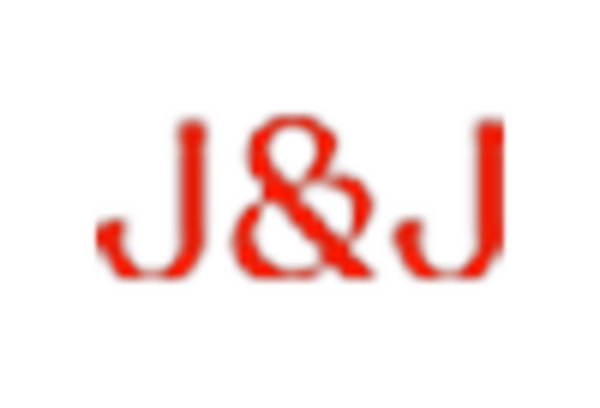Rising Healthcare Expenditure
The upward trend in healthcare expenditure is influencing the Rotator Cuff Treatment Market significantly. As countries allocate more resources to healthcare, patients are increasingly able to access advanced treatment options for rotator cuff injuries. This financial commitment to healthcare is evident in various regions, where spending on orthopedic treatments has seen a marked increase. Reports indicate that healthcare expenditure is projected to grow, which may lead to enhanced availability of innovative therapies and improved patient access to care. Consequently, this trend is likely to stimulate market growth as more individuals seek effective solutions for their rotator cuff issues.
Advancements in Surgical Techniques
Technological advancements in surgical techniques are transforming the landscape of the Rotator Cuff Treatment Market. Innovations such as arthroscopic surgery and minimally invasive procedures have significantly improved patient outcomes and reduced recovery times. Data indicates that these advanced techniques not only enhance the precision of repairs but also minimize complications associated with traditional open surgeries. As a result, more patients are opting for surgical interventions, which is likely to drive market growth. Furthermore, the development of new surgical instruments and techniques continues to evolve, suggesting a promising future for the industry as healthcare professionals adopt these advancements to improve treatment efficacy.
Growing Awareness of Treatment Options
There is a notable increase in awareness regarding treatment options for rotator cuff injuries, which serves as a catalyst for the Rotator Cuff Treatment Market. Educational initiatives and outreach programs by healthcare organizations have played a crucial role in informing patients about available therapies, including physical therapy, injections, and surgical options. This heightened awareness is reflected in patient inquiries and consultations, leading to a greater demand for specialized care. Market data suggests that as more individuals become informed about their treatment choices, the likelihood of seeking timely intervention increases, thereby positively impacting market dynamics.
Increasing Incidence of Rotator Cuff Injuries
The rising prevalence of rotator cuff injuries is a primary driver for the Rotator Cuff Treatment Market. Factors such as an aging population and increased participation in sports contribute to this trend. According to recent data, rotator cuff injuries account for a significant percentage of shoulder-related complaints, with estimates suggesting that nearly 30% of individuals over the age of 60 experience some form of rotator cuff pathology. This growing incidence necessitates effective treatment options, thereby propelling the demand for various therapeutic interventions within the market. As healthcare providers seek to address these injuries, the market is likely to see an uptick in innovative treatment modalities, including surgical and non-surgical approaches, which could further enhance market growth.
Integration of Telemedicine in Treatment Plans
The integration of telemedicine into treatment plans is emerging as a transformative factor in the Rotator Cuff Treatment Market. Telehealth services provide patients with convenient access to healthcare professionals, enabling timely consultations and follow-ups without the need for in-person visits. This shift is particularly beneficial for individuals in remote areas or those with mobility challenges. Data suggests that the adoption of telemedicine has increased significantly, with many patients reporting satisfaction with remote consultations. As telehealth continues to gain traction, it is expected to enhance patient engagement and adherence to treatment plans, thereby positively influencing market growth.


















Leave a Comment